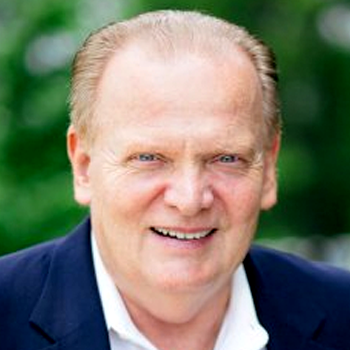Back to series


Jonathan Edwards (1703–1758)
Jonathan Edwards has been variously evaluated as the greatest philosopher/theologian America has ever produced or else caricatured as a monster who delighted in tormenting his congregation with hell fire and damnation preaching. However, even his opponents recognized his genius. Who was this man who caused such extreme reactions?
Edwards was born into a pastor’s family October 5, 1703. He was the only son, and had ten sisters, each of the sisters was about six feet tall, and were referred to as Timothy Edwards’ “sixty feet of daughters.” Jonathan also grew to be tall and thin. He very early demonstrated a keen intellect and astute powers of description, writing scientific studies on spiders when he was eleven.
He was admitted to Yale at 13 years of age, graduated at 17 and continued there to study for the ministry at Yale Seminary. He was elected a tutor at Yale in 1724 (age 21) and later, in 1726, called to be assistant minister in his grandfather’s church at Northampton, where he remained for most of his adult life.
Although he is known as a powerful preacher an one who was instrumental in the Great Awakening in America, he was not the fiery preacher conveyed by his most famous sermon, “Sinners in the Hands of an Angry God.” His voice was not very powerful, since he never used loud volume or dramatic gestures to make his points. The power of his preaching lay in the vivid imagery in his sermons. He believed that people would remember that which was made most vivid to their senses. It was this “rhetoric of sensation” that made his sermons effective.
In Samuel Hopkins’ Life of Edwards he says, “He commonly spent thirteen hours, every day, in his study.” Some of this time was spent in sermon preparation for the Sunday morning and evening sermons as well as a mid-week lecture. Certainly he spent much time reading books and writing down his own thoughts. He always read with pen in hand to write down important references, sometimes even rising at midnight to record thoughts. As part of his daily devotions he rode his horse into the woods and would walk alone meditating, recording notes to himself and pinning them on his coat. When he returned home, friends commented that he often looked as if he had been in a snow storm.
Although he spent much time in intellectual pursuits, Edwards maintained that true religion is rooted primarily in the affective emotions. His famous Religious Affections develops this theme. While pointing out the importance of our emotions, he nevertheless cautions:
“If a minister be driven with a fierce and intemperate zeal and vehement heat, without light, he will likely
kindle the like unhallowed flame in his people and to fire their corrupt passions and affections, but will make
them never the better, nor lead them a step towards heaven, but drive them apace the other way.”
In other words, it is possible to have heat (emotion) and little light (truth). It is no better, however, to have light without heat. Believers should be known for both light and heat, head and heart.
George Whitefield, the great evangelist, visited Northampton and preached in Edwards’ church. Whitefield later records in his journal:
“Preached this morning and good Mr. Edwards wept during the whole time of exercise. The people were
equally affected, and in the afternoon, the power increased yet more.”
Edwards also confirms (without mentioning himself specifically):
“the congregation was extraordinarily melted by every sermon; almost the whole assembly being in tears for a
great part of sermon time.”
He not only valued emotion but felt deep emotions himself. Jonathan drew up a set of seventy resolutions that he regularly reviewed in order to maintain his spiritual edge. They include:
“Resolved, that I will do whatsoever I think to be mostto God’s glory, and my own good, profit and pleasure,
in the whole of my duration.
“Resolved, Never to lose one moment of time, but improve it the most profitable way I possibly can.
“Resolved, Never to do any thing which I should be afraid to do, if it were the last hour of my life.
“Resolved, Never to do anything out of revenge.
“Resolved, to study the Scriptures so steadily, constantly and frequently, as that I may find, and plainly perceive myself to grow in the knowledge of the same.
“Resolved, Never to give over, nor in the least to slacken my fight with my corruptions, however unsuccessful I may be . . . .“
Jonathan Edwards had a wonderful relationship with his wife Sarah Pierrpoint. Elizabeth Dodds, author of a study on the Edwards’ marriage, says that he was a “tender husband, an effective and affectionate father, a human being quite unlike the image of him as the stern preacher of sermons about sin. His happy marriage to Sarah was more than a loving link between two people: it was Edwards’ link to life—to the practical; to warm fireplaces, good food, attractive surroundings; to devotion, to the daily-ness of the Incarnation. What Edwards described as their ‘uncommon union’ bonded them marvelously to one another, and it also bonded them to the loving God.”
Where Jonathan was socially stiff, Sarah was socially adept. Where he was intellectual and sometimes abstract, she was practical and concrete. They complemented each other well. George Whitefield commented on their marriage after staying in their house: “... a sweeter couple I have not seen.” During the revival in 1742, Sarah had an overwhelming experience with the Lord that involved episodes of fainting, visions, and ecstasy lasting over a period of days. He writes about her experiences (without mentioning her name) in Some Thoughts Concerning the Present Revival of Religion. It led Sarah to a deeper assurance of God’s love than she had experienced before.
Jonathan and Sarah had eleven children. In 1900 a reporter tracked down 1,400 descendants and found that they included 13 college presidents, 65 professors, two graduate school deans, 100 lawyers, 66 physicians, 80 holders of public office, including three senators and three governors of states. They had written 135 books, included many bankers, heads of business, and many missionaries. The reporter summarized, “The family has cost the country nothing in pauperism, in crime, in hospital, or asylum service: on the contrary, it represents the highest usefulness.”
Towards the end of his life, Edwards was invited to be president of Princeton. Shortly after his installation, a smallpox epidemic hit, and Edwards volunteered to try the then new experimental procedure of vaccination for smallpox. He soon was very sick. As he lay dying, the doctor and two of his daughters leaned down to hear his last words:
“Give my kindest love to my dear wife, and tell her that the uncommon union which has so long subsisted between us has been of such a nature as I trust is spiritual and therefore will continue forever.”
B.B. Warfield said: “Jonathan Edwards, saint and metaphysician, revivalist and theologian, stands out as the one figure of real greatness in the intellectual life of colonial America.”
Martyn Lloyd-Jones comments: “No man is more relevant to the present condition of Christianity than Jonathan Edwards. . . . . He was a mighty theologian and a great evangelist at the same time . . . . He was preeminently the theologian of revival. If you want to know anything about true revival, Edwards is the man to consult.”
FOR FURTHER STUDY:
If you want to read a biography of Edwards, I recommend Jonathan Edwards by Iain Murray; to study his theology, John Gerstner’s The Rational Biblical Theology of Jonathan Edwards (3 vols.); to start reading Edwards, Charity and Its Fruits might be a good starting place or if you are more ambitious, Banner of Truth has two volumes (small print): The Works of Jonathan Edwards. We also have available a recent series on tape by Gerald McDermott on Spiritual Discernment—a study of Edwards’ Religious Affections.

Arthur W. Lindsley
Senior Fellow for Apologetics, CSLIArthur W. Lindsley is the Vice President of Theological Initiatives at the Institute for Faith, Works, & Economics. He has served at the C.S. Lewis Institute since 1987 both as President until 1998 and currently as Senior Fellows for Apologetics. Formerly, he was director of Educational Ministries at the Ligonier Valley Study Center, and Staff Specialist with the Coalition for Christian Outreach. He is the author of C.S. Lewis's Case for Christ, True Truth, Love: The Ultimate Apologetic, and co-author with R.C. Sproul and John Gerstner of Classical Apologetics, and has written numerous articles on theology, apologetics, C.S. Lewis, and the lives and works of many other authors and teachers. Art earned his M.Div. from Pittsburgh Theological Seminary and a Ph.D. in Religious Studies from the University of Pittsburgh.
 COPYRIGHT: This publication is published by C.S. Lewis Institute; 8001 Braddock Road, Suite 301; Springfield, VA 22151. Portions of the publication may be reproduced for noncommercial, local church or ministry use without prior permission. Electronic copies of the PDF files may be duplicated and transmitted via e-mail for personal and church use. Articles may not be modified without prior written permission of the Institute. For questions, contact the Institute: 703.914.5602 or email us.
COPYRIGHT: This publication is published by C.S. Lewis Institute; 8001 Braddock Road, Suite 301; Springfield, VA 22151. Portions of the publication may be reproduced for noncommercial, local church or ministry use without prior permission. Electronic copies of the PDF files may be duplicated and transmitted via e-mail for personal and church use. Articles may not be modified without prior written permission of the Institute. For questions, contact the Institute: 703.914.5602 or email us.
-
Recent Podcasts
The Road Back – Trevor Lancon’s Story
by Trevor Lancon, Jana Harmon on November 15, 2024Deeply involved in his church’s youth group, Trevor...Read More
-
From Politics to Pampers
by Michelle Morgan Knott, Aimee Riegert on November 15, 2024
-
An Unexpected Change – David Westerhoff’s Story
by David Westerhoff on November 8, 2024
-
Recent Publications
Will You Be Ready?
by Thomas A. Tarrants on October 23, 2024Tom Tarrants gives insights on how we can...Read More
-
Should Christians Be Involved with Politics?
by Kerry A. Knott on October 1, 2024
-
Isn ’t Atheism Based on Scientific Fact Whereas Christianity is Based on “Faith”?
by Cameron McAllister on September 1, 2024
0
All Booked
0.00
All Booked
0.00
All Booked
23169
ADVENT CALENDAR: The Amazing Prophecies Fulfilled by the Birth of Jesus Christ
https://www.cslewisinstitute.org/?event=advent-calendar-the-amazing-prophecies-fulfilled-by-the-birth-of-jesus-christ&event_date=2024-11-28®=1
https://www.paypal.com/cgi-bin/webscr
2024-11-28

Next coming event
Days
Hours
Minutes
Seconds
ADVENT CALENDAR: The Amazing Prophecies Fulfilled by the Birth of Jesus Christ
On November 28, 2024 at 6:00 amSpeakers

Arthur W. Lindsley
Senior Fellow for Apologetics, CSLI
Team Members

Arthur W. Lindsley
Senior Fellow for Apologetics, CSLIArthur W. Lindsley is the Vice President of Theological Initiatives at the Institute for Faith, Works, & Economics. He has served at the C.S. Lewis Institute since 1987 both as President until 1998 and currently as Senior Fellows for Apologetics. Formerly, he was director of Educational Ministries at the Ligonier Valley Study Center, and Staff Specialist with the Coalition for Christian Outreach. He is the author of C.S. Lewis's Case for Christ, True Truth, Love: The Ultimate Apologetic, and co-author with R.C. Sproul and John Gerstner of Classical Apologetics, and has written numerous articles on theology, apologetics, C.S. Lewis, and the lives and works of many other authors and teachers. Art earned his M.Div. from Pittsburgh Theological Seminary and a Ph.D. in Religious Studies from the University of Pittsburgh.




